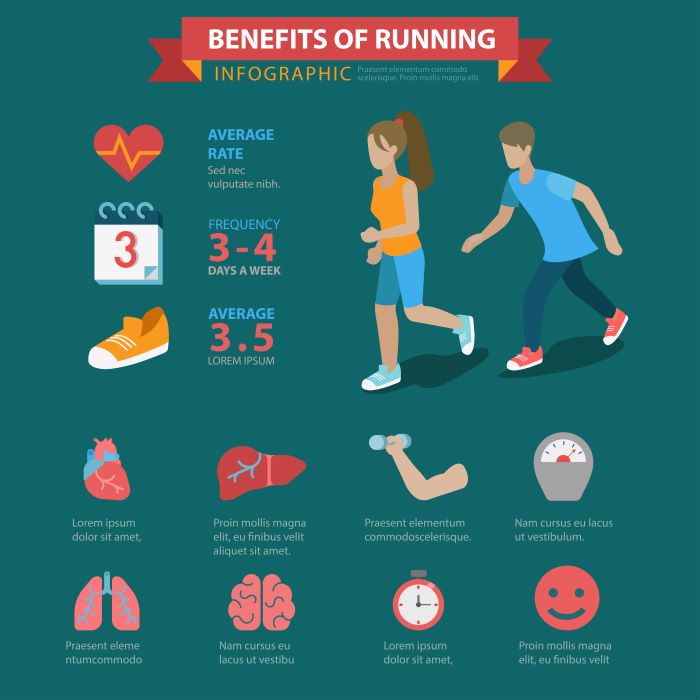Running laps is more than just a simple exercise; it’s a fundamental practice that enhances your overall fitness and performance. Engaging in this repetitive motion offers a myriad of benefits, particularly for those looking to improve their speed and endurance.
First and foremost, running laps allows for controlled pacing, which is essential for developing speed and stamina. When you run on a track or a designated course, you can easily monitor your pace and adjust your speed accordingly. This practice not only helps you become more aware of your body’s capabilities but also aids in setting realistic goals.
Additionally, running laps fosters mental resilience. The monotony of running the same distance repeatedly can challenge your mental strength, teaching you to push through discomfort and fatigue. This psychological training is invaluable during races and long-distance runs, where mental fortitude plays a crucial role in performance.
Moreover, it serves as an excellent opportunity to incorporate various workout techniques, such as interval training and tempo runs. By alternating between high-intensity bursts and recovery periods, you can maximize your workout efficiency and improve your cardiovascular health.
It’s essential to understand that each lap you complete brings you one step closer to achieving your fitness goals. Visit our website to learn more and get started today! Click here.
Essential Warm-Up Techniques for Runners

Before embarking on your lap running journey, it is crucial to prepare your body with effective warm-up techniques. A proper warm-up not only enhances performance but also reduces the risk of injury. Here are some essential warm-up techniques to consider:
- Dynamic Stretching: Engaging in dynamic stretches such as leg swings, arm circles, and high knees can help increase blood flow to your muscles and improve flexibility. These movements mimic the actions you’ll perform during running, making them particularly beneficial.
- Jogging: A gentle jog for about 5-10 minutes can elevate your heart rate and gradually warm up your muscles. Start at a slow pace and gradually increase your speed, allowing your body to adapt.
- Drills: Incorporate running drills such as butt kicks and skipping to activate different muscle groups. These exercises enhance coordination and prepare your body for the rhythm of running laps.
- Mobility Exercises: Focus on mobility exercises for your hips, ankles, and shoulders. Movements like hip openers and ankle circles can enhance joint flexibility, ensuring a smoother running experience.
Implementing these warm-up techniques into your routine can significantly improve your performance and enjoyment while running laps. Remember, taking the time to warm up properly is a key component of any effective workout regimen.
Key Strategies to Improve Your Lap Times

Improving your lap times requires a combination of effective strategies and consistent practice. Here are some key approaches to help you enhance your performance on the track:
- Focus on Pacing: Understanding your ideal pace is crucial. Start by determining your comfortable running speed and gradually work on increasing it. Use a watch or an app to monitor your lap times and adjust your pace accordingly.
- Interval Training: Incorporate interval training into your routine. This involves alternating between periods of high-intensity sprints and recovery runs. For instance, sprint for 30 seconds, then jog or walk for 1-2 minutes. This method boosts your speed and endurance.
- Strength Training: Building strength, particularly in your core and legs, enhances running efficiency. Engage in exercises like squats, lunges, and planks to develop the necessary muscle groups that contribute to faster lap times.
- Proper Nutrition: Fueling your body with the right nutrients is essential for optimal performance. Ensure you consume a balanced diet rich in carbohydrates, proteins, and healthy fats. Hydration also plays a critical role in maintaining stamina during your runs.
- Consistent Practice: Regularly practice running laps to build muscle memory and improve your technique. Set aside specific days for lap training, and focus on maintaining good form throughout your runs.
Implementing these strategies into your training plan can lead to noticeable improvements in your lap times, bringing you closer to your running goals.
Effective Breathing Techniques While Running

Mastering proper breathing techniques while running is essential for enhancing endurance and performance. Here are some effective methods to ensure you’re breathing efficiently as you hit the track:
- Deep Belly Breathing: Instead of shallow chest breathing, focus on deep belly breathing. This technique allows you to take in more oxygen and helps promote relaxation. Inhale deeply through your nose, allowing your diaphragm to expand, and exhale fully through your mouth.
- Rhythmic Breathing: Establish a rhythmic breathing pattern that matches your running pace. A common method is the 2:2 pattern, where you inhale for two steps and exhale for two steps. This synchronization helps regulate your breath and ensures a steady supply of oxygen.
- Inhale Through the Nose, Exhale Through the Mouth: Breathing in through your nose can help filter and warm the air, while exhaling through your mouth allows for a quicker release of carbon dioxide. This combination can lead to more efficient breathing.
- Practice Breathing Exercises: Incorporate breathing exercises into your training routine. Techniques like pursed lip breathing or box breathing (inhale for four counts, hold for four, exhale for four, hold for four) can improve your lung capacity and strengthen your respiratory muscles.
- Stay Relaxed: Tension in your shoulders and neck can hinder effective breathing. Focus on maintaining relaxed posture while running, keeping your shoulders down and your arms moving naturally to facilitate deeper breaths.
By integrating these breathing techniques into your running practice, you can enhance your overall performance, sustain your energy levels, and enjoy a more fulfilling running experience.
Post-Run Recovery Tips for Optimal Performance
Post-run recovery is crucial for maintaining optimal performance and preventing injuries. Implementing effective recovery strategies will help your body heal and prepare for future runs. Here are some essential tips to enhance your post-run recovery:
- Cool Down Properly: After completing your run, take a few minutes to walk at a slower pace. This cool-down period helps gradually lower your heart rate and prevents dizziness.
- Hydrate: Replenishing fluids lost during your run is vital. Drink water or a sports drink containing electrolytes to restore your hydration levels and support muscle recovery.
- Stretching: Engage in gentle stretching exercises focusing on your major muscle groups, particularly those used during your run. Stretching can alleviate tightness and improve flexibility, aiding in recovery.
- Nourish Your Body: Consuming a balanced meal or snack rich in carbohydrates and protein within 30 minutes post-run aids in muscle repair and replenishes glycogen stores. Consider options like a protein shake, yogurt with fruit, or a turkey sandwich.
- Rest and Sleep: Prioritize adequate sleep as it plays a significant role in muscle recovery and overall performance. Aim for 7-9 hours of quality sleep to allow your body to heal and recharge.
- Cross-Training: Incorporate low-impact activities such as swimming, cycling, or yoga into your routine on rest days. These activities promote blood circulation, reduce muscle soreness, and help maintain fitness levels without the strain of running.
By following these post-run recovery tips, you can enhance your performance, reduce the risk of injury, and ensure your body is ready for your next running adventure.
Joining a Running Community for Motivation

Joining a running community can significantly boost your motivation and enhance your running experience. Being part of a supportive group not only provides accountability but also fosters camaraderie among fellow runners. Here are several reasons why connecting with a running community can elevate your motivation:
- Shared Goals: Engaging with others who share similar fitness aspirations can inspire you to push your limits. Whether training for a marathon or simply aiming to improve your lap times, having a shared goal helps you stay committed.
- Support and Encouragement: A running community offers emotional support during tough training sessions. Fellow runners can motivate you on days when you lack enthusiasm, reminding you of your progress and celebrating your achievements.
- Networking Opportunities: Connecting with seasoned runners can provide invaluable tips and insights about improving your technique, nutrition, and recovery. Learning from their experiences can accelerate your growth and development as a runner.
- Fun and Social Interaction: Running doesn’t have to be a solitary activity. Participating in group runs or events allows you to meet new people, make friends, and enjoy social interactions, adding an element of fun to your training.
- Access to Organized Events: Many running communities organize events, races, and training sessions that provide structure to your running schedule. This can be a fantastic way to challenge yourself and stay engaged in your running journey.
Incorporating these connections into your running routine can significantly enhance your overall experience. Visit our website to learn more and get started today! Click here.


